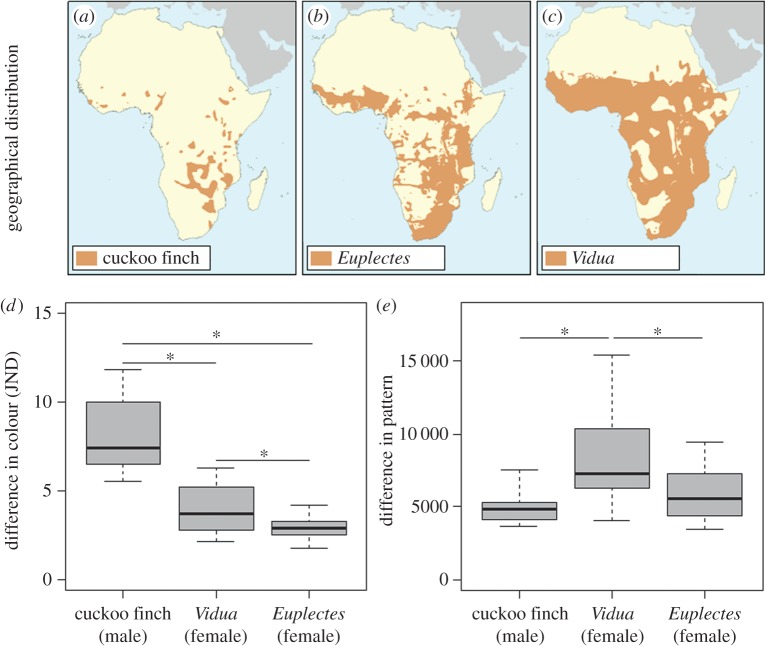Figure 2.
The geographical distribution of the (a) cuckoo finch, (b) Euplectes (Euplectes albonotatus, E. capensis, E. macroura and E. orix) weavers and (c) Vidua (Vidua chalybeata, V. macroura and V. paradisaea) finches that were analysed in this study. Throughout sub-Saharan Africa, 82% of the cuckoo finch's distribution lies within that of the (merged) Euplectes weavers’ distribution, and within 96% of the (merged) Vidua finches’ distribution. Range map data were kindly provided by BirdLife International and NatureServe [24]. Note that these percentages are underestimates as we only included Euplectes and Vidua finch species that were present at our study site in southern Zambia, and had a minimum of eight skin samples available for analysis at The Natural History Museum at Tring, UK. Differences in (d) colour (JND, just notable difference) and (e) pattern between cuckoo finch female plumage and cuckoo finch male (Anomalospiza), and sympatric Vidua and Euplectes species. Asterisks denote significant differences and whiskers show ranges. p-values for pairwise comparisons were obtained by varying the reference category in the models. Summary data are presented in the electronic supplementary material, table S1.

